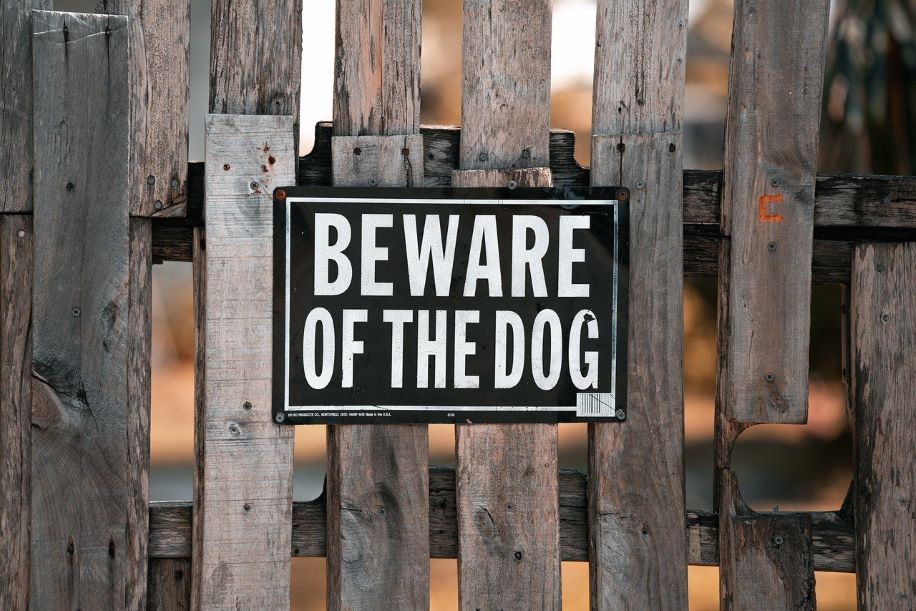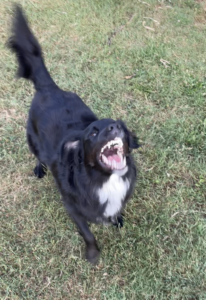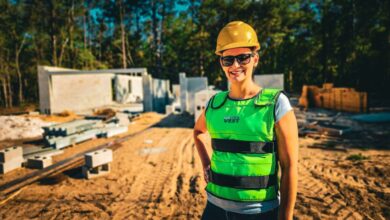Dog Bite Prevention

By Eric Morales
It is very common for landscape and tree care professionals to encounter dogs during their daily work. According to the 2022 American Veterinary Medical Association (AVMA), 44.5% of households in the United States own a dog. That is a 6.1% increase from 2018.
And, while most of us love the furry creatures, it is important to realize that they can be unpredictable, and we need to be cautious when we encounter a dog in the field. Dog bites are more common than one might think with more than 4.5 million people being bitten by dogs each year in the United States according to the U.S. Centers for Disease Control (CDC). To prevent hazardous situations with dogs while in the field, situational awareness can give us a major advantage.
Knowledge is power, and situational awareness is important when recognizing hazards and preventing incidents. One of my ACRT coworkers, Jerry Staton, authored an article on practicing situational awareness. Jerry and I like to challenge each other and ask, “Do you see what I see?” to develop our situational awareness skills.
How to prepare for a job
When approaching a property, it’s important to scan your surroundings and assess where you’ll be working. On occasion, driving through an area before beginning work can give you a better idea of loose dogs while in the safety of your vehicle. It’s possible to identify the presence of a dog through telltale signs such as “beware of dog” signs, bowls, worn paths in the grass, and feces. But in many homes, there are no outward signs of dogs on the property. It is also possible to talk to the homeowner and ask them if they have dogs and, if they do, to restrain them for the duration of your work.
By partnering situational awareness skills with personal protective equipment (PPE), we can reduce the likelihood of a dog encounter from the start, and potentially lessen damage from an attack. Using PPE as a barrier in the event of a dog attack can save you from a painful injury. There are many options available — from pop-up umbrellas to dog sprays — but like all PPE, these resources are the last line of defense and require training to be used effectively. It is also important to understand there may be legal ramifications if someone harms a dog from the improper use of these tools.
What to look for
Knowing what behavior to look for in a dog can help you determine if you need to remove yourself from the situation. Signs of aggression include efforts to make the dog look bigger like:
- Raised fur
- Ears up and forward
- Quick vertical tail wagging
- A stiff and straight-legged stance
- Staring, growling, lunging and barking
Signs of fear or anxiety include efforts to make the dog look smaller such as:
- Cowering
- Tucked tail
- Flattened ears
- Remaining still
- Avoiding eye contact
- Growling
It is important to remove yourself from the situation if a dog is showing any signs of aggression or fear to prevent injury.
How to handle dog encounters
If a dog becomes aggressive during an encounter, exit the area without running or turning your back and return to your vehicle or place your back against a solid object, such as a utility pole. Maintain an upright posture, and with a stern voice, tell the dog “no” or to “go home.”
In the event of a dog attack, minimize the possible damage by putting something between you and the dog, such as a clipboard or hard hat. Lawn furniture, trash cans, and other items can serve as a quick barrier or be used to strike during an attack. Be prepared to fight for your life. You must defend yourself, but once the attack is over, you must stop. If you deploy dog spray, it is important to let the dog owner know to avoid unintended injury to others who may touch the dog and so they can get the dog the necessary veterinary attention.
Handling dogs that are pets
Owners are very trusting of their dogs and on occasion, overconfident in their ability to control them. Never presume a homeowner can control their dog, no matter how gentle or friendly it looks. The best way to prevent being bitten is to avoid approaching loose dogs entirely. It’s important to remember that as an employee you have the right and obligation to ask homeowners to restrain their dogs, regardless of the animal’s temperament. If they are unwilling or unable to do so, consider rescheduling for a better time.
Many times, our tasks take us through fenced-in yards or other enclosed spaces, which is why explaining the work you will be performing and the length of time you will be on the property is critical. We’ve had scenarios where the dogs were quiet and sneaky until we were deep into the property, resulting in dangerous encounters. Dogs can be territorial, so it is important to understand that being in their space may cause them to become aggressive, and having the owner keep them in the home or restrain them for the duration of your work is always best practice.
Handling stray dogs
In a perfect world, employees and owners collaborate in the interest of safety. However, some of the dogs we encounter in the field might not belong to anybody. These strays can be some of the most aggressive or scared dogs due to their situation. Understanding that you may come across stray dogs and knowing what to look for can provide context clues as to whether a dog is feeling stressed, frightened or threatened.
Spread the word
It’s important to report dog encounters and attacks and areas with high concentrations of strays to the customer, especially if they have a dangerous dog database. There will be other people and partners who will visit these locations, so passing the word to notify everyone there is or was an aggressive dog at an address helps keep others safe.
Both dogs and homeowners can be affected by unwanted encounters or attacks. Many states have a rabies quarantine protocol that can last up to 10 days if proven vaccination records are not available. This comes at the homeowner’s expense and often in a secluded offsite location.
Think of how many residences you encounter each day, how many animals likely fall into the AVMA’s statistics of pet ownership, and how it can affect you. Stay situationally aware and always remember that you have the right and obligation to ask homeowners to restrain their dog.
Eric Morales is an operations manager at ACRT and has more than 17 years of industry experience. He is an International Society of Arboriculture (ISA) Certified Arborist and serves as the chairman of ACRT’s Safety Committee. Morales holds a Bachelor of Science in agriculture/horticulture from Stephen F. Austin State University in Nacogdoches, Texas.



